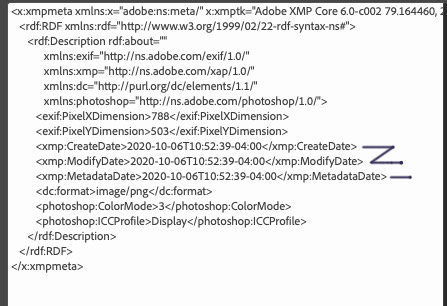The middle has hunkered down until both sides have worn themselves out. We’ll still be here when the dust settles.
Trump is bad. But talk of packing the Supreme Court and nuking the electoral college is just as bad.
The pendulum swings wider.
not directly related to the question, but if you drop images in google photos, for example, like me, you might have wondered how they know so much about dates, places etc., of the images. it’s called EXIF data.
an enterprising person on twitter found out by using an EXIF data viewer that this and the other “working” picture–instead of being taken on two days as claimed–were taken ten minutes apart.
a good tool for your arsenal is an EXIF data viewer–can’t post links, sorry.
A little tidbit of information on EXIF data. Those creation dates? Take a photo you have laying around on your desktop and email it to yourself. Download it from the email to your desktop. Open both photos in photoshop. Look under File>File Info in Photoshop under Raw Data. You will see that the one you just emailed to yourself has today’s date under Creation Date rather than the old date of the original photo. Wait ten minutes and send it to yourself again. It is now the same image sent 10minutes apart.
The same thing will happen quite often when images are downloaded from a server or site like DropBox or other online service.
For instance, here is the raw data pane from a photo I downloaded last February. I emailed it to myself and look at the creation date. This information is useless to you and proves nothing.

That creation date will change if I export out of Photoshop too. As in Export > Save for web (Legacy)
Side note here, this data doesn’t always change when emailed. Seems to depend on file format and how it was originally created. Just suffice to say the date means absolutely nothing as far as when the original image was taken.
Yup. I remember running into the xmp:CreationDate problem years ago when we thought we could use it as a meaningful chronological search parameter in an asset library. After looking into it, we found that the creation date was determined by the software that made the last change to the file and whether or not that software considered the change to be a modification to an existing file or the creation of a new one.
Open a tiff file, for example, then save it to jpeg and that arguably creates a brand new file with entirely different data of the sort that warrants a new creation date.
Right, Creation Date is the file creation date, not the date the image was captured. Any maneuver that precipitates a new write or rewrite of the file, results in a new date.